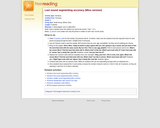
In this activity, students say the last sound of a spoken word.
- Subject:
- English Language Arts
- Material Type:
- Activity/Lab
- Provider:
- Free Reading
- Author:
- Free Reading
- Date Added:
- 04/23/2019

In this activity, students say the last sound of a spoken word.

In this lesson, students engage in independent literacy centers to become proficient in completing activities about the stories they read. Although this lesson uses Seven Blind Mice as an example, the framework is adaptable to almost any text.
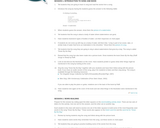
In this lesson, students will use a popular children's song that contains several high-frequency vocabulary words to assist in recognizing, reading, writing, and using the words in several contexts. Students sing the song repeatedly, while following along with a picture book that contains the lyrics and illustrations. They are then encouraged to participate in several hands-on activities to reinforce learning of the vocabulary words.

In this interactive, students will make a word ending in -at that matches the picture by replacing the first consonant of the word.

In this interactive, students will make a word ending in -en that matches the picture by replacing the first consonant of the word.
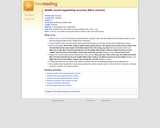
In this activity, students say the middle sound of a spoken word.

In this interactive activity, students will practice phonemic awareness, learn letter names, and practice letter sounds. They will choose the appropriate letter to create a CVC word.

This document provides a description of what each standard means a student will know, understand and be able to do. The "unpacking" of the standards done in this document is an effort to answer a simple question, "What does this standard mean that a student must know and be able to do?" and to ensure the description is helpful, specific and comprehensive for educators.

This assessment and remediation guide contains resources (lessons, worksheets, games, songs, progress monitoring, and more) to develop a student's phonological awareness by determining a student's need(s).
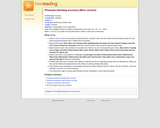
In this activity, students blend multiple sounds into a word.
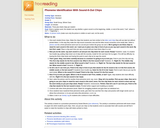
In this activity, students say whether a given sound is at the beginning, middle, or end of a spoken word.
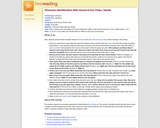
In this activity, students say the beginning, middle, or last sound of a spoken word.

In this activity, students segment a spoken word into separate phonemes.
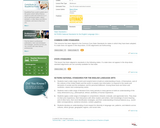
In this lesson, students become familiar with the short /u/ sound as they listen to Taro Yashima’s Caldecott Honor-winning book, Umbrella. Prereading activities build vocabulary and comprehension skills, a read-aloud introduces students to the sounds of the story, and concluding exercises allow students to apply their understanding of phonic elements in other contexts.

In this lesson, a combination of children's literature, learning centers, and activities focus on learning about the letter m. Students will learn about phonics by participating in an integrated array of activities, including reading, writing, mathematics, music, art, and technology.

In this lesson, students will use a weekly poem to explore meaning, sentence structure, rhyming words, sight words, vocabulary, and print concepts. After studying the poem, students are given a copy of the poem to illustrate and share their understanding. All of the poems explored are then compiled into a poetry portfolio for students to take home and share with their families. To further connect home to school, a family poetry project is suggested.
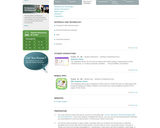
In this lesson, students read words found on everyday objects and use them to identify individual letters. They then create captions for an electronic book with preselected logos and illustrations. Finally, they create an original little book choosing their own logos, captions, and images.

In this lesson, students will learn to identify letters and words by exploring one another's names and other words. Each student gets to be "Student of the Day," and the class will explore his or her name and life. Students will learn which letters are in their classmate's name, as well as the words for their friend's hobbies and favorite things. Students will be encouraged to draw and write messages to each other on a daily basis.
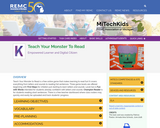
Teach Your Monster to Read is a free online game that makes learning to read fun! It covers everything from letters and sounds to reading full sentences.
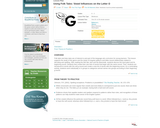
In this lesson, students will read the folk tale Jack and the Beanstalk and discuss the word giant and its beginning sound. Students then create their own lists of words that begin with the same sound. Then, students are introduced to words with the soft g sound and create a new list of words with this beginning sound. As a culminating activity, students work individually or in groups to categorize animal names into groups according to their beginning g sound.